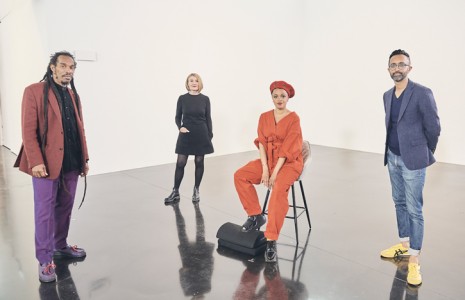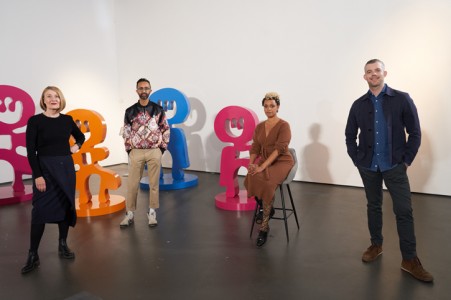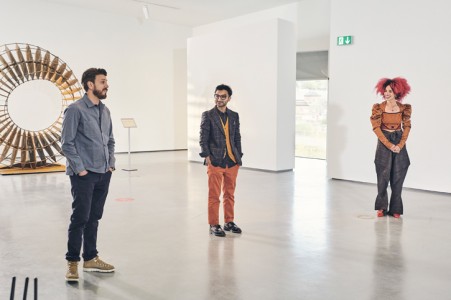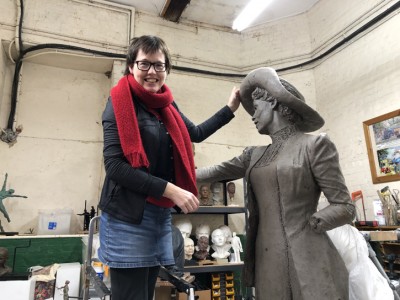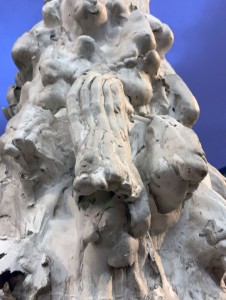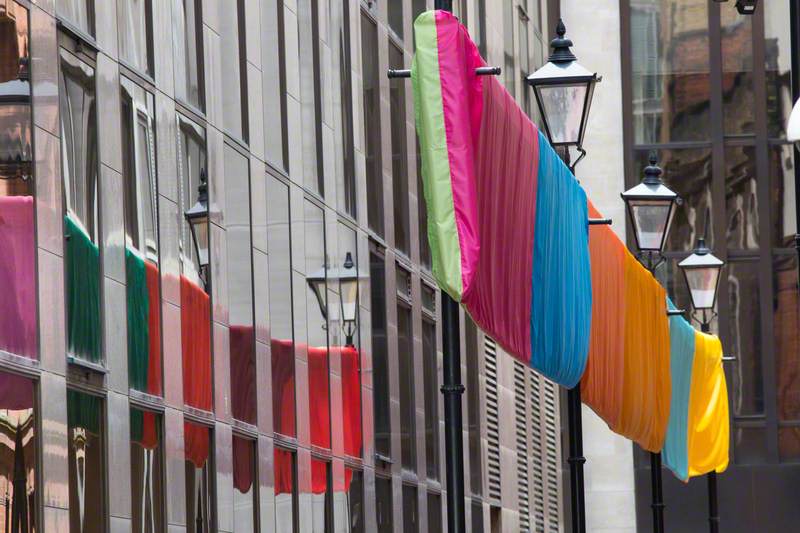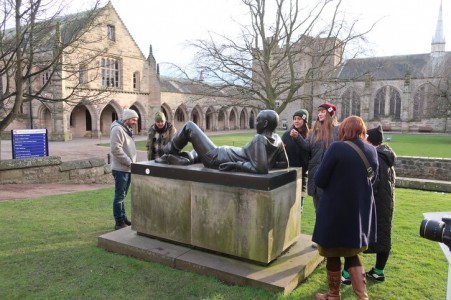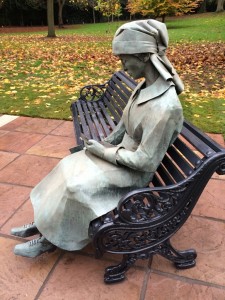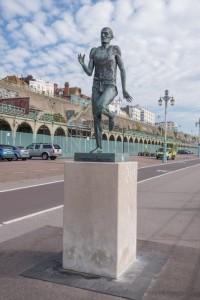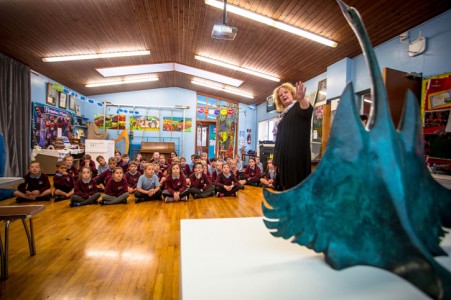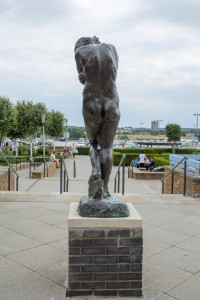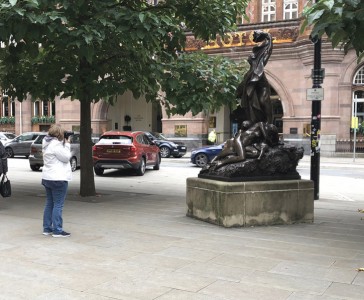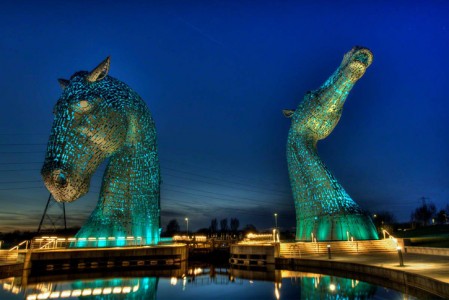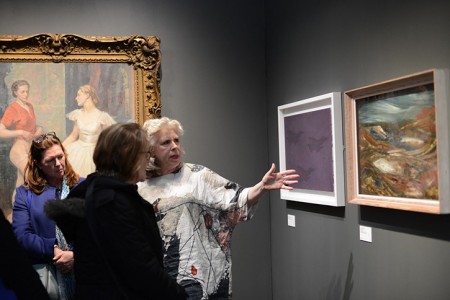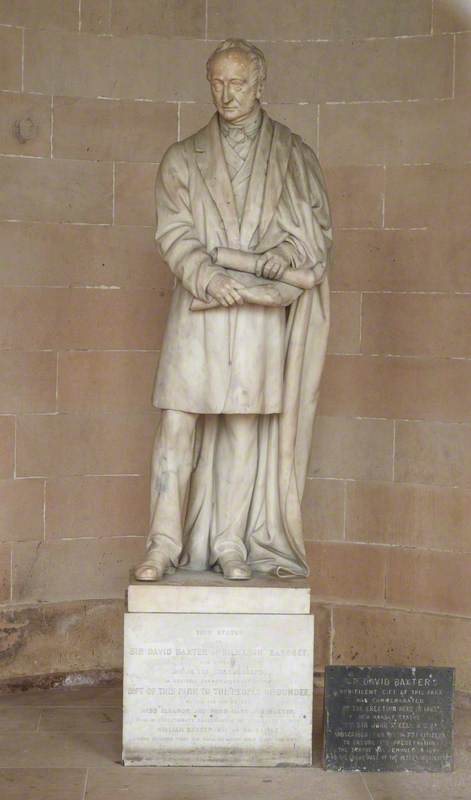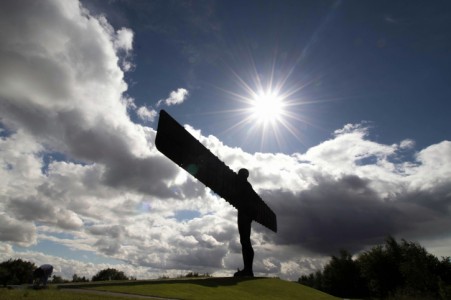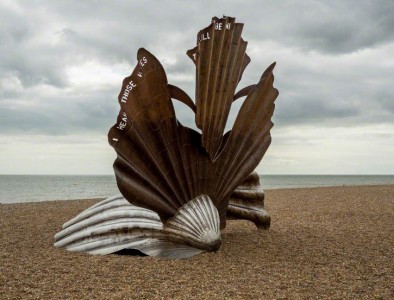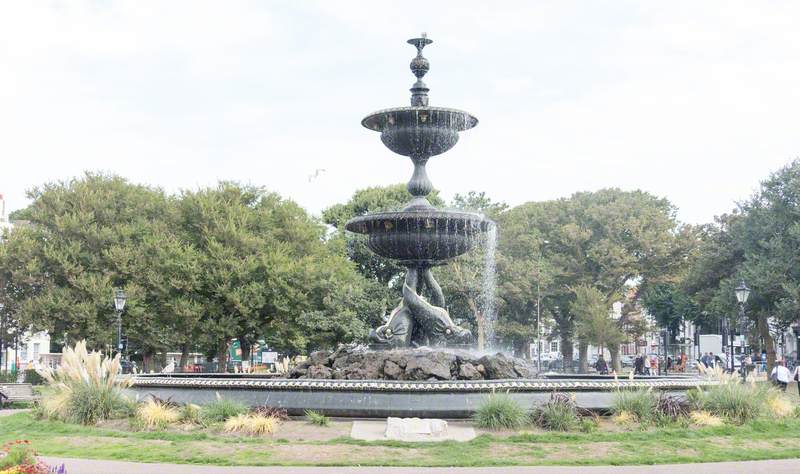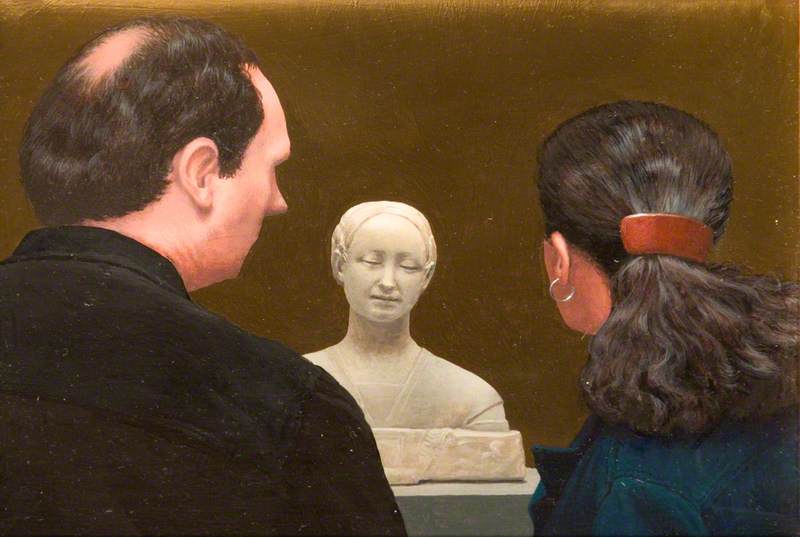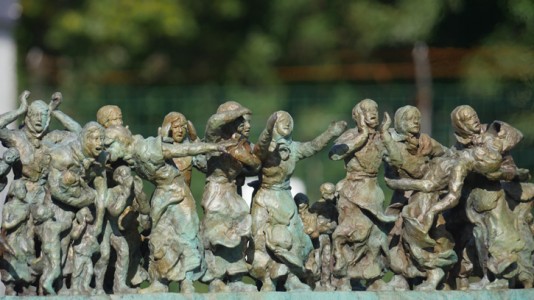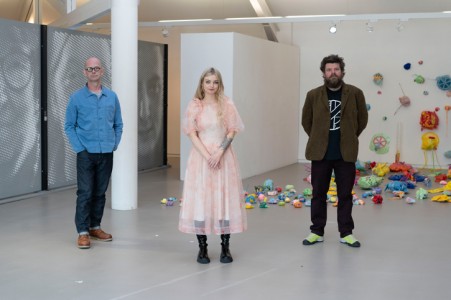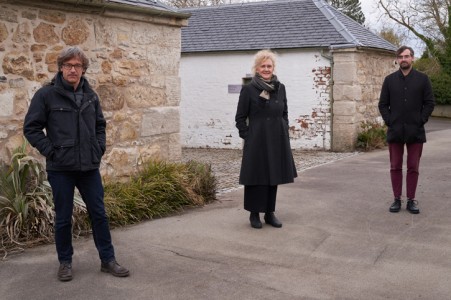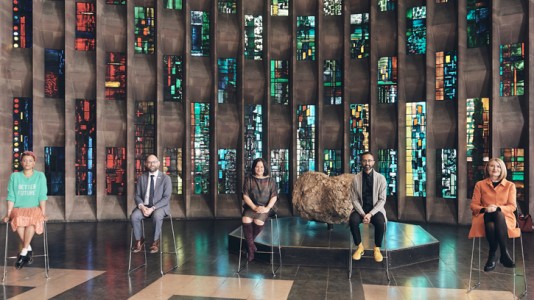In theory, the Sky Arts TV programme Landmark is about sculpture and art in the public realm, but in this episode it becomes clear that it is just as much about the incredible natural beauty and history of the UK. We arrive in Wales for episode four of the competition to identify which artist will be given a commission to make a permanent public art piece for Coventry, currently City of Culture.
Presenter Gemma Cairney and the judges
The judges for this episode are Clare Lilley, Hetain Patel and Charlotte Church 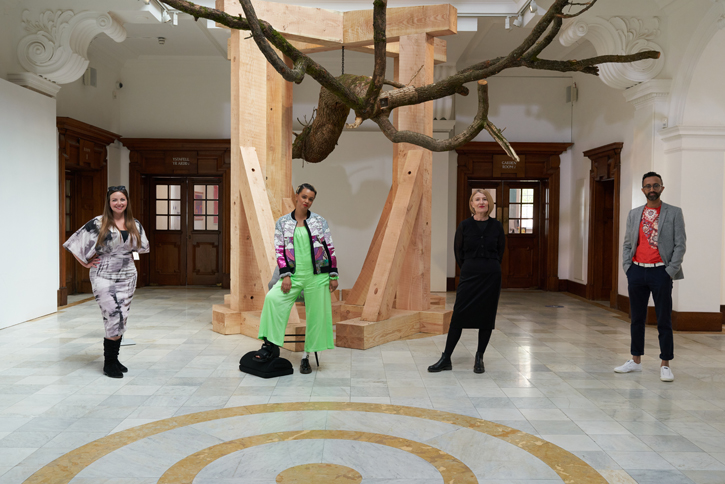
Our three artists this week come from a country that has historically nurtured great talents such as Richard Burton, Cerys Matthews, Tom Jones, Catherine Zeta-Jones and Dylan Thomas. However, given our focus here, we must not forget some of the wonderful artists Wales has produced, including Kyffin Williams, Cerith Wynn Evans, Shani Rhys James, Richard Wilson, John Gibson, Laura Ford and Barry Flanagan – all well represented in the museums and collections featured on Art UK.
In this episode, Nathan Wyburn from Cardiff, John Merrill based near Llangollen in North Wales, and Candice Bees from the outskirts of the Brecon Beacons, go into battle to be crowned winner of the Welsh heat of Landmark based on the judgements of our two experts, Clare Lilley and Hetain Patel, this week joined by singer-songwriter Charlotte Church.
Guest judge Charlotte Church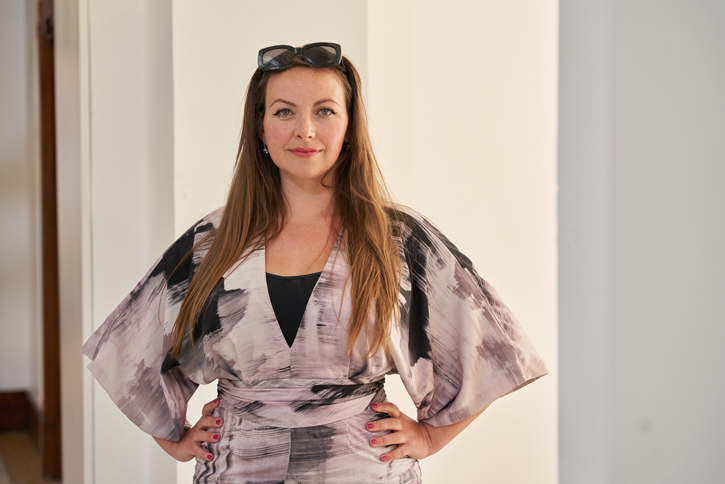
Strangely, this episode collides with my life as a Portrait Artist of the Year (PAOTY) judge. In the very first series of PAOTY we travelled to Cardiff and had rugby player Gavin Henson as a sitter on the programme. Gavin managed to charm the pants off all the artists, possibly because he decided to pose topless, in his pants (rugby shorts), heroically clutching a rugby ball – the perfect athletic form. That was an interesting contrast to one of our other sitters on the day, Sue Tilley – the Benefits Supervisor, known as Big Sue, who famously sat for Lucian Freud. On that very episode we had Nathan making one of his bread/marmite works of art. On that occasion, the portrait was of our then presenter Frank Skinner (co-presenter Joan Bakewell being more associated with crumpets...)
Artist Nathan Wyburn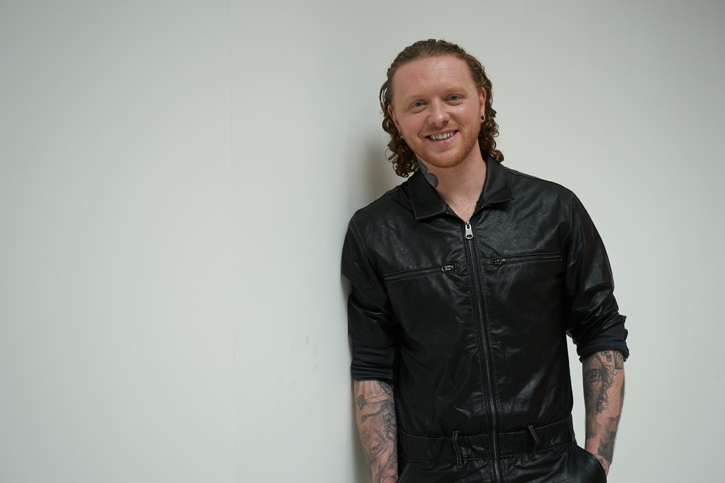
Nathan, raised in the valleys and now based in Cardiff, has built a reputation for working with everyday materials (including bread and pizza), often representing celebrities such as Lorraine Kelly or Harry Styles in what he likes to think of as a contemporary pop art style. Expert Clare welcomes the way in which he breaks down elitist associations with traditional sculpture materials, but will she be happy with the end result, I worry?
Artist Candice Bees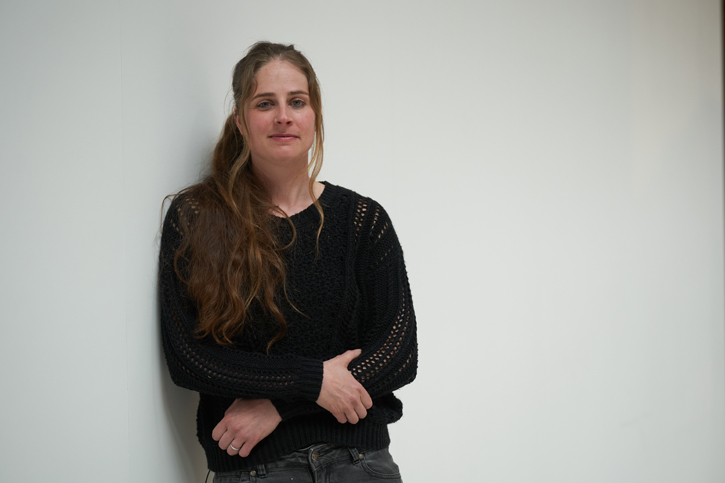
Candice, whose mother was a vet, clearly loves animals. Although she completed a degree in illustration, she initially struggled to make her way into the art world and instead worked as a police officer. Her career subsequently took off after she developed her practice around animals and wire sculpture. Hetain is taken by the level of detail and texture that Candice manages to achieve in her work and generally encourages each of the artists to be confident in their mediums or alternatively, to take risks with something new. With such conflicting advice, which road will the artists take, and will it win or lose them the prize?
As Hetain and Clare point out, public art is something that everyone can access as it is in our outside environment with which we have daily encounters. However, this means that the power is with the viewer as they can vote with their feet and choose either to walk on by or to stop and engage. Will our artists be able to get the experts and the public to stop and engage when the works finally go on show at the Glynn Vivian Art Gallery in Swansea?
Artist John Merrill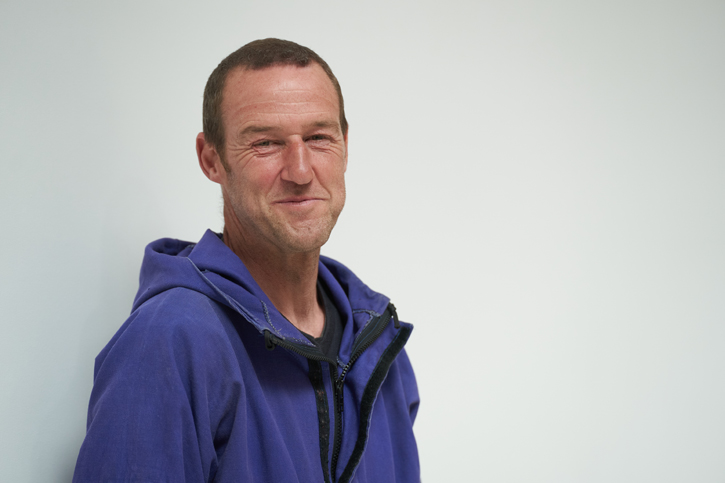
So to John, our Wild Man of the Woods, consummately connected to the fundamental nature of his material so that you feel that he lives and breathes it and nothing else. Believing himself to have the best job in the world, John studied at Liverpool John Moores University and is involved not just in designing his artwork but getting deep into the physicality of making. Sustainability is key to his methodology as we see him work with a large fallen oak branch, intending to suspend it within a Douglas fir pine framework, all sourced from the region.
The piece will weigh around two tonnes when complete, so engineering will be key. It is fascinating to watch John deconstruct and then recompose the monumental oak branch with which he is working – the delicate level of precision of joint making and bolt positioning defying the brutality of the piece. It is this combination of delicacy and robustness, the manmade and the natural, that will give the work its strength.
Tipping Point
Sculpture by John Merrill 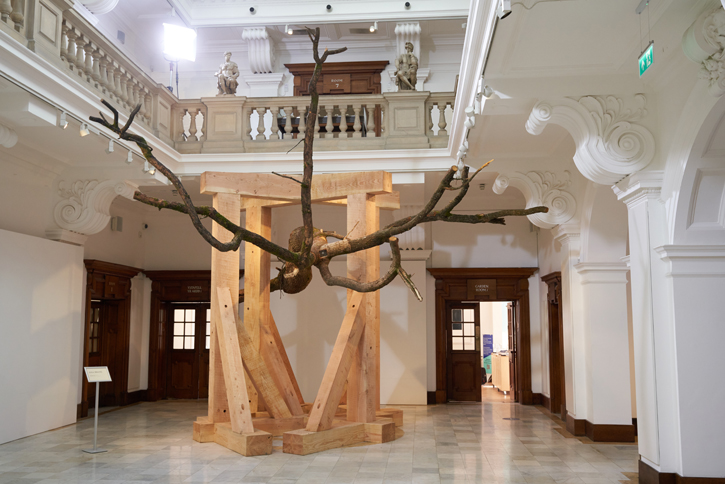
Nathan has decided to tackle the sensitive subject of the Aberfan mining disaster of 1966, in which 144 school children and teachers from Pantglas Junior School lost their lives. The depths of despair and anguish at the time were recorded in photographs and newspapers of the day and it is to one of these images that Nathan turns, taking his inspiration from an image of miner Jonny Thomas, one of the first to reach the scene following the collapse of the colliery spoil tip. Hetain encourages Nathan to connect with members of Jonny Thomas' family, partly to be sure that he is dealing with the subject matter as delicately as possible and partly for the research that should underpin his work.
21.10.1966 144 9.13AM
Sculpture by Nathan Wyburn 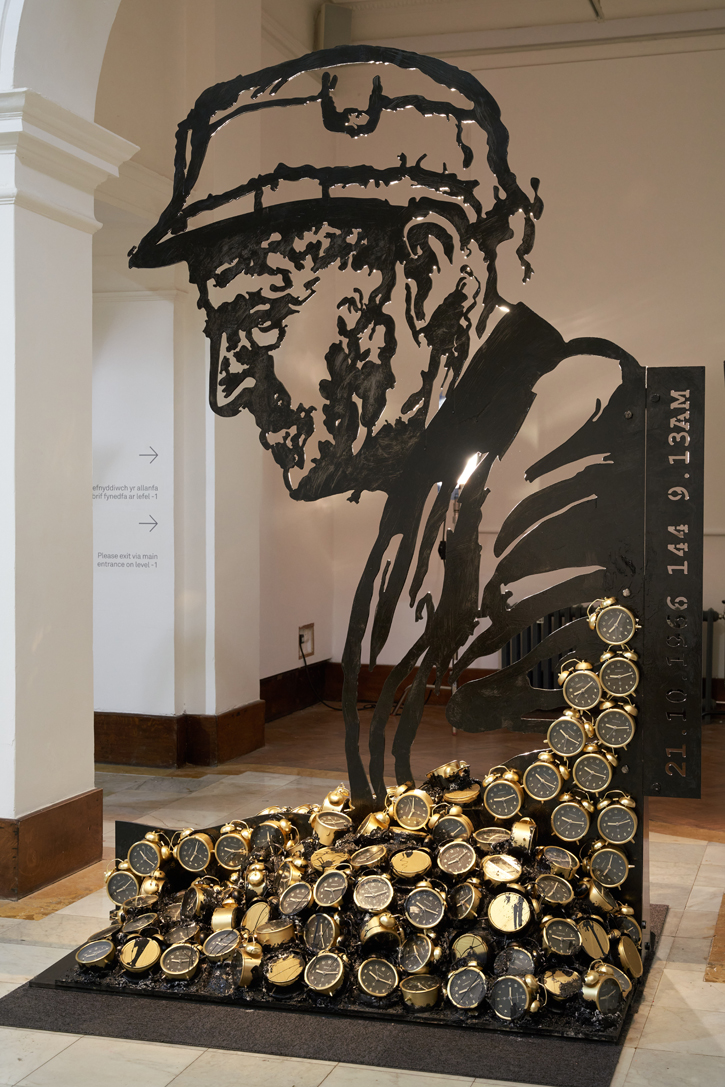
The stillness that Nathan encounters when he visits the memorial in Aberfan and where he meets a relative of Jonny Thomas is something that he identifies as wanting to capture in his piece. Clearly a bread and marmite work is not going to cut it here, so Nathan decides to create a sculpture, something that he hasn't done since he was at school, and using materials that he has never worked with, such as cement and expanding foam.
The episode is interesting in helping us understand the important complementary relationship between fabricators and artists that often exists in making public art and sculpture. In Nathan's case we see that their advice in relation to the laser cut corten steel profile of Jonny Thomas pays dividends.
Candice's idea is to bring the rural into the city, much as she herself went from the valleys in her home life into the urban as a police officer. With Candice, the pressure is all around time as normally it would take her one month to make a single animal and here she is aiming to create three sheep within two weeks.
Sheep
Sculpture by Candice Bees 
To achieve this, she must develop new techniques, as well as enlisting her sculptor/designer father. You soon get to see who's in charge as you hear Candice gently reprimanding him for not following her instructions regarding the way in which the wire wool is pulled through the chicken wire, replicating the sheep's fleece. But it is in watching Candice work with the different grades of steel wire that the haptic nature of the medium truly comes across. With the almost meditative repetition of the threading of the wire, it is quite amazing to watch the animal figures develop their corporeal sense, effectively coming to life with the cheeky attitude that she intended.
When we meet the final sculptures in the grand gallery of the Glynn Vivian it is the contrast in scale that is so arresting. That and the fact that John has shaved off his beard. His work is now over four metres high and powerfully dominates one end of the space.
John Merrill with his sculpture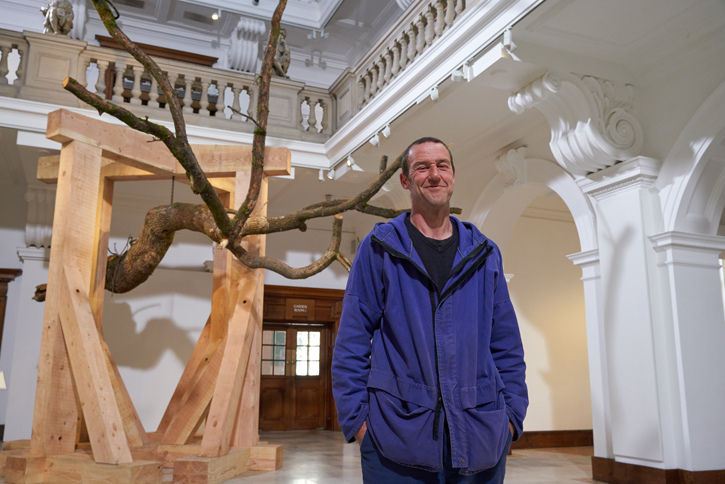
For John, the work lived on getting the right balance point, providing movement to the piece. As we consider the perverse horizontality of the 'tree' in its contained cage-like framework, John's realisation that the tree itself is already a perfect sculpture, so does not need carving into, feels very much like the right decision. However, one member of the public commenting on the work brings a darker meaning to bear when he is at first seduced by the piece but on closer inspection finds that thoughts of lynching come to mind. Hetain meanwhile struggles with the idea of what is hidden and what is revealed with regard to the mechanics of the piece but this is an age-old conundrum for artists and John has clearly decided which side he stands on. Will it be the right one for the judges?
Nathan Wyburn with his sculpture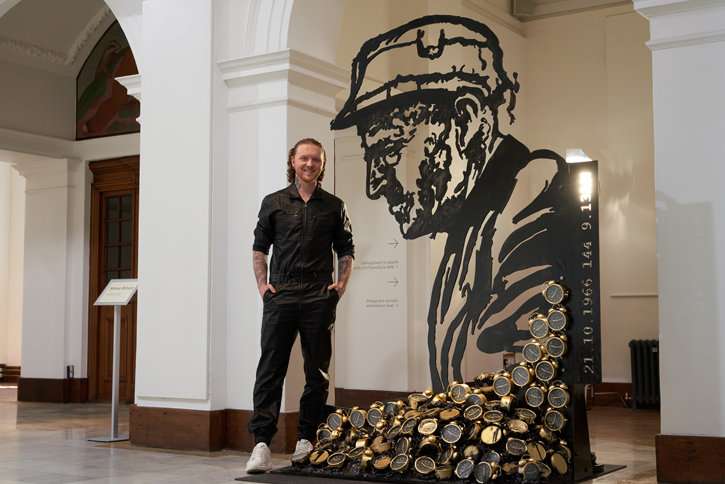
Nathan has given his work a powerful title that reflects the time of the disaster and its impact, 21.10.1966 144 9.13AM, but there are still concerns around the sensitivity, or maybe even taste, of the piece. Whereas Candice's badly behaved sheep, intended by her to raise a smile, play truant from the countryside as they wander into an urban scene, rustling around in an upturned bin. But for me, they have a rather malevolent, dystopian, post-apocalyptic feel about them... but maybe that says more about me than her.
Candice Bees with her sculpture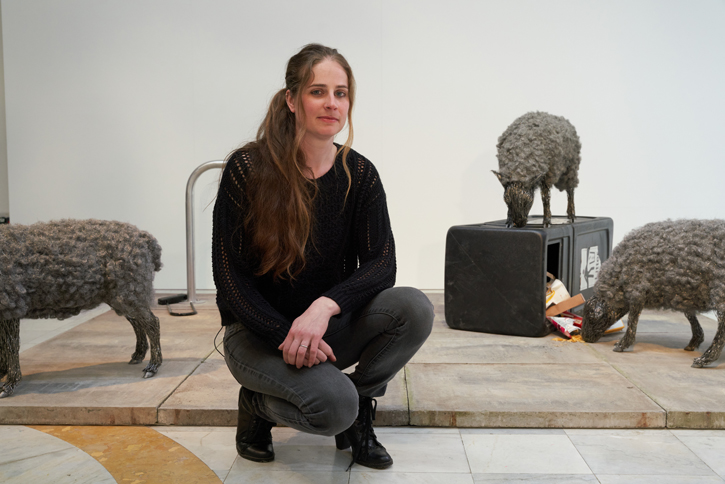
As we approach the final decision, Charlotte reminds us that public art can have deep meaning and be soothing to the soul, but that it can also be playful – which only suggests that she will struggle to choose a winner. Hetain is looking for something with visual impact and Clare has her eye on the main permanent art commission and is considering which of these three artists would be best able to raise their sights and abilities to that level. But it is Nathan who sums it up so neatly when he identifies that with these three installations, they bring animals, people and landscape into the one room and that's a pretty powerful thing.
Kathleen Soriano, independent curator, art historian and broadcaster
If you want to visit this episode's works you will have a good excuse to travel this glorious country from top to bottom. John Merrill's Tipping Point is on display in the landscape at Ruthin Arts Centre in North Wales. Nathan Wyburn's 21.10.1966 144 9.13AM is on display at the Welsh Mining Experience at the Rhondda Heritage Park in South Wales. Candice Bees' sheep are on show at University Hospital Wales in Cardiff.
Landmark airs weekly from Monday 6th September at 8pm on Sky Arts (Freeview Channel 11) and streaming service NOW
